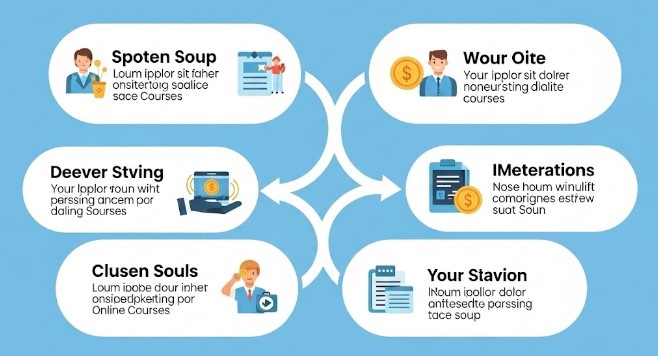How to Use Affiliate Marketing for Online Courses 🎯
Introduction
Affiliate marketing can be one of the most powerful ways to grow sales for your online courses — without spending heavily on ads. By partnering with influencers, bloggers, and niche websites, you can reach a targeted audience that’s ready to learn from you. In this guide, we’ll break down step-by-step how to set up a successful affiliate program for your courses.
1. Understand the Basics of Affiliate Marketing 📚
Affiliate marketing is a performance-based strategy where you reward partners (affiliates) for sending you paying customers. Affiliates promote your online course using special tracking links. When someone purchases through their link, they get a commission.
Why it works for online courses:
- Low upfront cost 💵
- Access to highly engaged audiences
- Builds long-term partnerships
2. Choose the Right Affiliate Platform 🛠️
To run your affiliate program efficiently, you’ll need a platform that tracks referrals, sales, and payouts.
Popular options:
- ShareASale – Great for beginners
- Teachable – Built-in affiliate tools for course creators
- ClickBank – Large marketplace for digital products
💡 Pro Tip: Choose a platform that integrates easily with your learning management system (LMS).
3. Offer Competitive Commissions 💰
The success of your affiliate program depends heavily on the incentive.
For online courses, 20–50% commission is common, especially if your course is digital (low overhead).
📈 Example: If your course sells for $200 and you offer 30%, your affiliate earns $60 per sale — a strong motivation to promote.
4. Create High-Quality Marketing Materials 📸
Make it easy for affiliates to promote your course by providing:
- Professionally designed banners 🖼️
- Email templates 📧
- Social media captions and images 📱
- Product descriptions that highlight the benefits of your course
5. Recruit the Right Affiliates 🔍
Look for partners who already have an audience interested in your topic.
- Bloggers in your niche
- YouTubers reviewing similar topics
- Social media influencers
- Other educators or online course creators
💬 Networking Tip: Attend virtual events and communities where your audience hangs out — you might find your next top affiliate there.
6. Track, Test, and Improve 📊
Monitor which affiliates are performing best and which marketing materials bring the highest conversions. Use A/B testing to refine your affiliate resources and commission structure.
🛠️ Tools to use: Google Analytics, your affiliate platform’s dashboard, UTM tracking codes.
Conclusion ✨
Affiliate marketing is a win-win for online course creators. You expand your reach, and affiliates earn money for sharing content they believe in. With the right platform, competitive commissions, and quality resources, your affiliate program can become a consistent source of income for your digital education business.






Leave a Reply